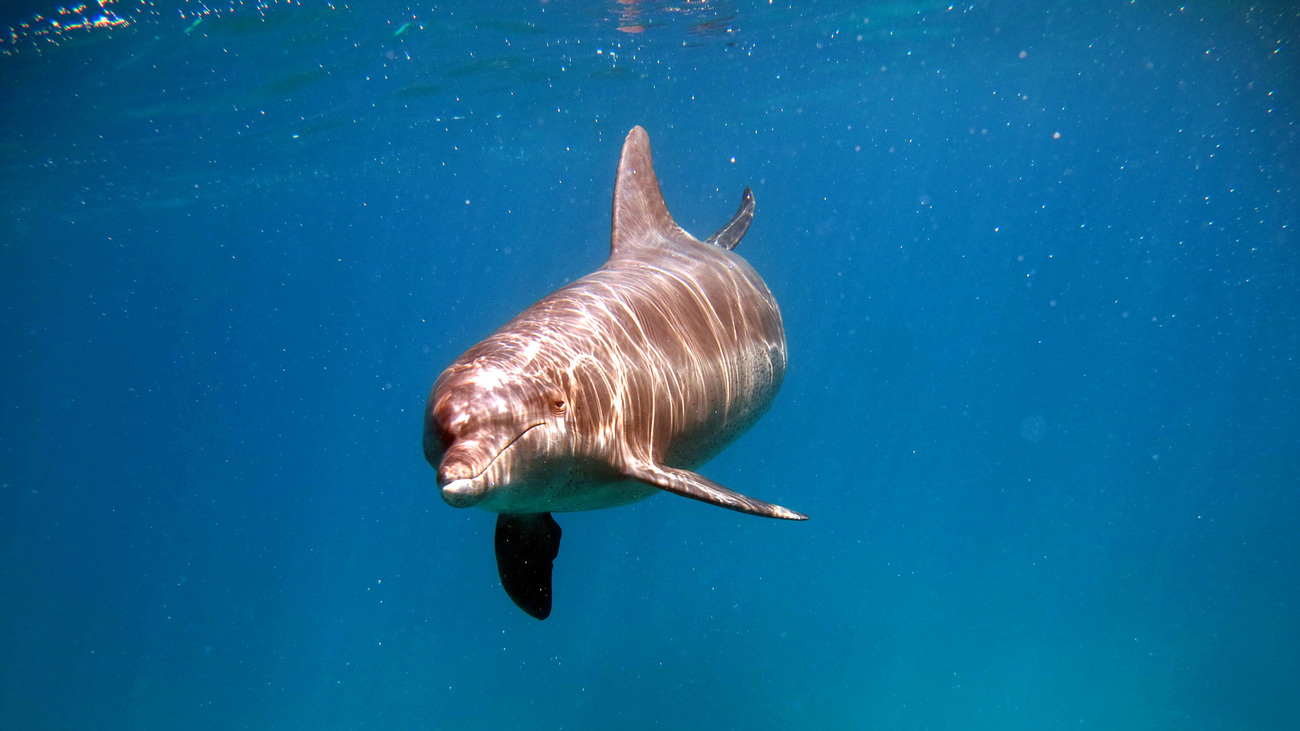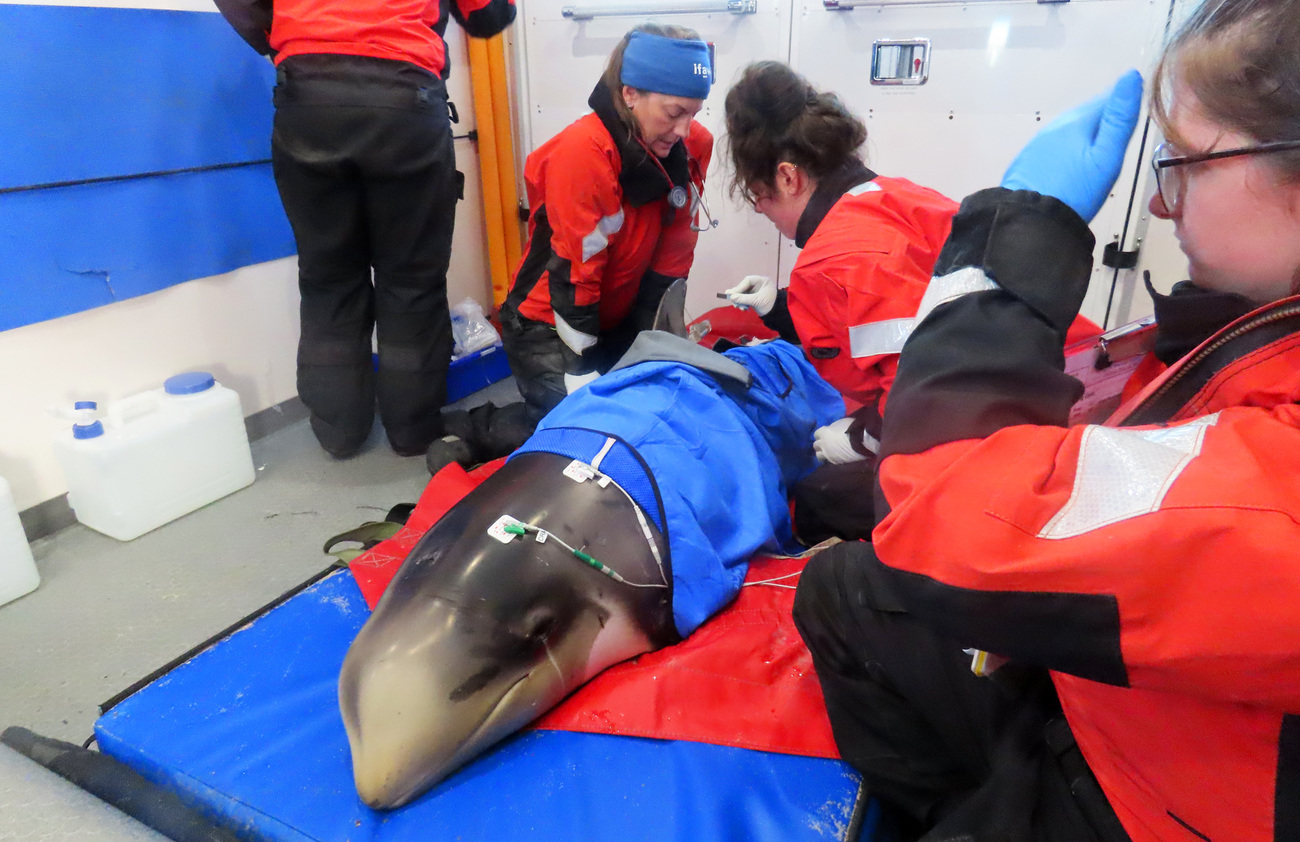Updates
Relief and recovery for animals and people in Myanmar
Read moreThe impact of climate change on dolphins
In addition to serving as focal points of local tourism for coastal communities, dolphins benefit their marine ecosystems by preying on fish, squid, shrimps, jellyfish, and octopuses. They help keep the populations of these animals in check, which in turn helps the plant life, smaller fish, crustaceans, and zooplankton preyed on by those animals to thrive. Sitting at the top of the food chain, the feeding behaviour of dolphins is crucial for the health of the environment.

Sadly, though, dolphins and other marine mammals are some of the animals suffering most from the impacts of climate change. A 2023 study published by NOAA found that 70% of US marine mammals were vulnerable to the threat of warming waters, which can impact their food sources and habitats. From sea level rise to ocean acidification, read on to learn about the ways in which dolphins are affected by climate change.
The planet’s warming has caused significant melting of Arctic ice, which contributes to rising sea levels. River dolphins are impacted by sea level rise because it causes salty water to move into freshwater habitats through the mouths of rivers.
Melting ice caps can also send large amounts of very cold water into warmer habitats—in 2011, scientists in Mississippi and Alabama reported a correlation between this cold water and the appearance of dozens of stillborn dolphin calves on shores.
Increasing water temperatures and ongoing droughts have impacted dolphins around the world. In October 2023, IFAW responded to the stranding of hundreds of Amazon and Tucuxi river dolphins in Lake Tefé, Brazil, as they experienced high water temperatures and a lack of rainfall. Many of these dolphins became stuck, and over 150 died.
Researchers found that following the 2011 heat wave in Australia, dolphins’ survival rates decreased by 12%, and females experienced lower birth rates.

Since dolphins live in the water, they can’t sweat or pant like other mammals when they’re too hot. Instead, they have to send warmer blood to the periphery of their bodies—like their bellies, which is why they sometimes appear pink—and allow it to get cooled by the ocean. However, when ocean temperatures start to warm to the level of dolphins’ body temperatures (about 98°F or 37°C), dolphins can no longer cool themselves down.
Rising temperatures also have an effect on the level of dissolved oxygen in the ocean. There is an inverse relationship between temperature and dissolved oxygen—as temperatures increase in the ocean, dissolved oxygen levels decrease. While dolphins themselves do not take in dissolved oxygen—they breathe oxygen from the air when they swim to the ocean’s surface—dolphins’ prey are negatively impacted by these changes, as fish take in dissolved oxygen through their gills.
The resulting lack of available food has also been known to cause polar bears to prey on dolphins that live in the Arctic.
Changes in the ocean’s chemistry, such as acidification that results from increased CO2 in the ocean, can impact how sound travels through the water. Dolphins rely on sounds for communication and echolocation, which they use to hunt. As the ocean’s pH decreases, it grows noisier, impacting dolphins’ ability to travel, hunt, and locate each other.
Ocean noise pollution is already a major issue impacting dolphins, as boats send vibrations through the water that impede the communication channels of marine mammals. If this issue is not mitigated by changing vessel speed regulations, ocean noise will only be further exacerbated by changes in the ocean’s chemistry.

As climate change causes the bleaching of coral reefs and shifts in temperature patterns around the globe, dolphins are forced to change their breeding and feeding areas. It’s difficult for them to tolerate high water temperatures—especially for coastal and inland dolphins, who can’t dive into deeper ocean waters where the temperatures are cooler.
Other climate change impacts, such as increasingly unpredictable severe weather, also affect dolphins’ habitats. The large atmospheric rivers that California experienced in 2023, for example, washed mass amounts of agricultural runoff and sewage into the ocean where dolphins live.
Florida’s recent red tides—caused by algal blooms—also produced toxins that killed hundreds of dolphins. While these algal blooms are caused by pollution from runoff, they are exacerbated by climate change. As air and water temperatures increase, the ocean becomes a more suitable environment for such algae to thrive. If harmful algal blooms like these continue to grow, dolphins could lose much of their coastal habitat.
An increase in the unpredictability and frequency of severe storms not only impacts dolphins’ habitat, but it could also be tied to disease. A 2020 study of dolphins by researchers from California and Australia identified a new skin disease experienced by dolphins that is linked to climate change. Storms brought decreased salinity to the ocean, which caused patchy, raised lesions to spread over about 70% of some dolphins’ skin. This disease has been observed in dolphins living in coastal areas around the world.

Dolphins are severely impacted by issues like pollution and ocean noise, which are only exacerbated by climate change. IFAW is committed to reducing ocean noise pollution through the work of our Blue Speeds campaign, as we advocate for reduced vessel speed limits.
In addition, IFAW works to promote innovative, nature-based climate solutions and recognises the pivotal role marine mammals play in the fight to mitigate climate change. Learn more about the marine conservation work we do around the world.
IFAW also has a dedicated Marine Mammal Rescue team that responds to dolphin strandings on the ground. In October 2023, we deployed to Lake Tefé, Brazil, to help train local teams in the rescue and rehabilitation of river dolphins. In December 2023, we rescued and released two Risso’s dolphins on Cape Cod, Massachusetts.
Our Dolphin Rescue Center, opened in 2023, is a first-of-its-kind facility where we can rehabilitate stranded dolphins. IFAW has pioneered dolphin stranding response. We’ve changed what’s possible for stranded dolphins’ survivability in the past, and we’re here to do it again.
Our work can’t get done without you. Please give what you can to help animals thrive.
Unfortunately, the browser you use is outdated and does not allow you to display the site correctly. Please install any of the modern browsers, for example:
Google Chrome Firefox Safari